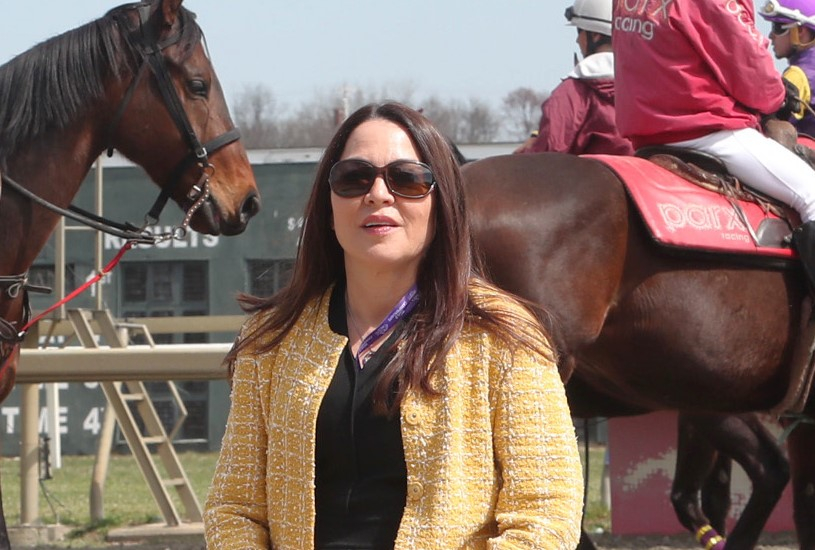Officials with the Horseracing Integrity and Safety Authority said during a streaming town hall-style meeting on Thursday that they are exploring ways to find outside funding for the authority’s programs but dismissed outright the idea of seeking federal dollars because of the current political and financial climate.
The meeting was held at a time when industry concerns have broadened over the increasing costs facing horsemen and racetracks to fund HISA’s programs, which include national drug testing and safety programs. Those costs are slated to significantly increase next year for many small or midsize tracks due to a change in the funding formula that will allocate costs beginning in 2026 strictly on the number of starts at a racetrack, rather than a combination of starts and purse levels.
Lisa Lazarus, the chief executive of HISA, acknowledged that many tracks will face a much higher burden in 2026, and she said that HISA was looking at “a range of options” for offsetting some of the increases, including assisting in state lobbying efforts and monetizing the authority’s databases. However, she could not be specific on any tangible results from those efforts, at least not yet.
“We have a lot of ideas and irons in the fire right now,” Lazarus said.
HISA was created by federal legislation passed by Congress late in 2020. Despite the legislation mandating certain programs from the authority, it left the authority’s funding to state racing commissions, which were given the option to pass on the costs to racetracks.
:: Subscribe to the DRF Post Time Email Newsletter: Get the news you need to play today's races!
While Congress would seem a natural starting point to search for funding given its role in creating the authority, Lazarus said that federal funding “is not really available to us right now,” in an acknowledgement of the current environment in Washington D.C., where the administration of Donald Trump has been slashing budgets or seeking deep cuts to nearly every federal agency, with minimal pushback from Congressional leadership.
HISA’s previous funding formula resulted in tracks with the highest purse levels paying a far greater share of its budget than tracks with lower purse levels. That formula was recently challenged in court by Churchill Downs Inc. and the New York Racing Association, even though HISA had already submitted the new rule for approval. The new formula was approved by HISA’s federal overseer, the Federal Trade Commission, early this year, and will go into effect for the 2026 budget year.
Concern began building over the impact of the new formula last month when the Seattle Times published a comprehensive exploration of the impact of the new fees on Emerald Downs, a small track in Washington State that does not receive gambling subsidies. The article described multiple efforts by management at Emerald to get state help, but a bill that would have allowed for a tax credit died in committee recently.
“We feel optimistic that this bill will be reintroduced and passed in the next legislative session,” said Bethany Erb, HISA’s director of public affairs, speaking during the town hall. Erb urged stakeholders in other states to seek similar solutions.
HISA officials spent the first 50 minutes of the town hall explaining their budgeting process and outlining figures that are available in its financial documents. They acknowledged that the average cost per start of the totality of their programs is expected to rise to $342.48 in 2025, up from $265.94 last year, the first year in which HISA’s programs were fully implemented for a full 12 months.
“We do hope and expect that we will be able to bring that down somewhat,” Lazarus said.
(A common misperception is that owners pay the per-start fee. The per-start fee is merely a financial metric that takes the total HISA budget and divides it by the number of starts run in states under HISA’s jurisdiction.)
Lazarus said that the per-start number could decline to just below $300 if several states – Louisiana, Texas, and West Virginia – not currently under its jurisdiction were brought into the fold, a development that could be forced by a Supreme Court ruling upholding the constitutionality of HISA’s structure and enabling legislation. U.S. District courts have issued conflicting rulings on the subject, and the Supreme Court is expected to take up the issue sometime later this year or early next year.
While HISA did not display the number of participants in the town hall, officials answered more than three dozen questions submitted during the meeting or beforehand. Many of the questions were seeking clarity on what other options were available for funding given the coming shift in the formula. Others asked for deeper explanations of HISA’s expenses.
Lazarus closed the conference by noting that the officials answered every single question submitted to the authority, and she called for the industry to trust that HISA is seeking the most efficient ways to operate under the mandates that were created by the federal legislation.
“HISA operates as a service to the industry,” she said. “We owe a tremendous fiduciary obligation to our shareholders, and we take that very seriously. . . . We are very committed to doing everything we can to be efficient on the cost side, which I think we’re doing, and to find other ways to bring money into the ecosystem that is not from tracks and horsemen.”
:: Want to learn more about handicapping and wagering? Check out DRF's Handicapping 101 and Wagering 101 pages.

